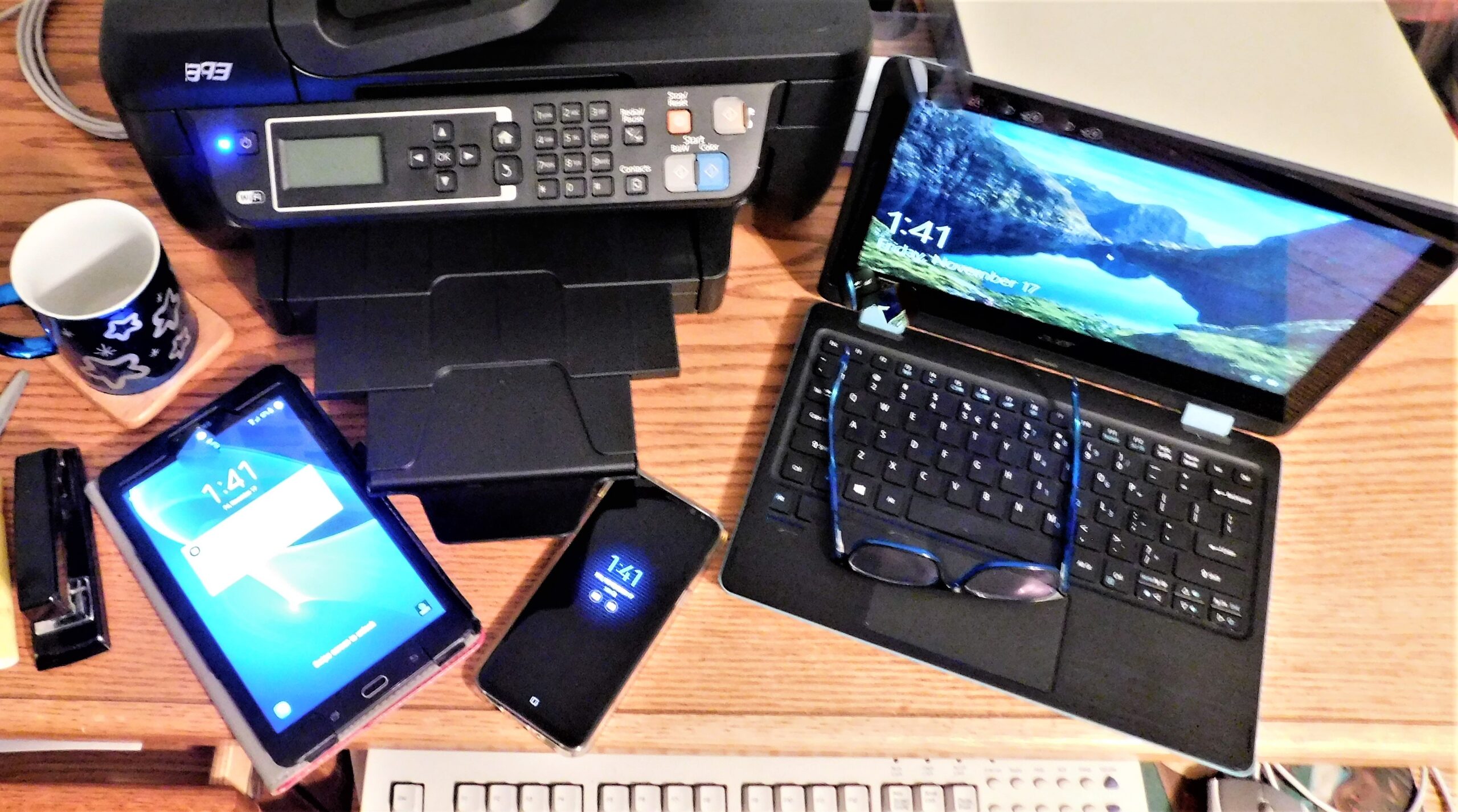Endpoint Detection & Response
- Home
- Endpoint Detection & Response
Protect Your Devices with EDR (Endpoint Detection and Response)
In today’s digital age, endpoints—your laptops, desktops, servers, and mobile devices—are some of the most vulnerable entry points for cyber threats. Endpoint Detection and Response (EDR) solutions provide real-time, automated protection to ensure every device in your organization remains secure, no matter where your employees work.
At ResoluteGuard, we empower your organization with cutting-edge EDR solutions designed to detect, respond to, and mitigate threats swiftly. With EDR, your team can stay productive while your endpoints stay secure.
Learn How We Help 500+ Public Entities with Endpoint Detection & Response

What EDR Can Do for You:
- Comprehensive Endpoint Protection: Protect every device from malware, ransomware, and other advanced threats, whether employees work remotely or on-site.
- Immediate Threat Detection and Response: EDR solutions automate threat detection and response, neutralizing risks before they can escalate into data breaches or other major incidents.
- In-Depth Forensics and Reporting: Gain actionable insights into every incident, including its origin, scope, and impact. This allows your organization to improve future security strategies.
- Faster Recovery Times: Minimize downtime with automated mitigation tools that ensure swift recovery from attacks, keeping your business operational.
Why Choose ResoluteGuard’s EDR Services?
- AI-Powered Threat Detection: Advanced machine learning ensures proactive protection against evolving cyber risks.
- Seamless Integration: Our EDR tools work alongside your existing systems for an effortless and effective security solution.
- Scalable for Any Business: Whether you’re a small business or an enterprise, our EDR solutions adapt to your unique needs.
- Cost-Effective Protection: Enjoy powerful endpoint security at a fraction of the cost of building an in-house solution.


What Happens Without EDR?
- Undetected Threats: Cyber threats can remain hidden, causing significant damage to your devices and networks.
- Longer Recovery Times: Attacks can escalate and disrupt your operations, resulting in financial and reputational losses.
- Increased Risk of Data Breaches: Endpoint vulnerabilities leave your organization exposed to ransomware and data theft.
Core Components of Endpoint Security for Public Entities
Endpoint Detection and Response (EDR)
- What It Is: EDR solutions monitor endpoint activity, detect threats in real-time, and provide tools for response and remediation.
- Best Practices: Deploy EDR software on all endpoints, including servers, desktops, laptops, and mobile devices. Use solutions that offer threat hunting, behavioral analysis, and automated response capabilities.
Multi-Factor Authentication (MFA)
- What It Is: Requires users to provide two or more verification factors to access endpoints or systems.
- Best Practices: Implement MFA for all endpoint logins, especially for administrative accounts. Use biometrics, hardware tokens, or app-based authenticators for added security.
Endpoint Encryption
- What It Is: Encrypts data stored on endpoints to prevent unauthorized access.
- Best Practices: Enforce full-disk encryption on all laptops, desktops, and mobile devices. Use encryption for data in transit, particularly over public or unsecured networks.
Secure Endpoint Configuration
- What It Is: Establishing baseline security settings for all endpoints.
- Best Practices: Disable unnecessary services and ports.
- Enforce policies for secure passwords, system updates, and application use.
- Use configuration management tools to standardize and monitor endpoint settings.
Mobile Device Management (MDM)
- What It Is: MDM solutions help secure and manage mobile devices accessing public entity networks.
- Best Practices:
- Enforce device-level security policies, such as password protection and remote wipe capabilities.
- Restrict access to sensitive data based on device compliance.
Anti-Malware and Next-Generation Antivirus (NGAV)
- What It Is: Software that identifies and removes malicious programs from endpoints.
- Best Practices: Deploy NGAV solutions that use AI and behavioral analysis to detect unknown threats. Regularly update definitions and conduct full-system scans.
Endpoint Backup and Recovery
- What It Is: Regularly backing up endpoint data to ensure quick recovery after an incident.
- Best Practices: Automate backups for all endpoints.
- Store backups securely, using encryption and access controls.
- Test recovery processes periodically to ensure they work effectively.
Key Strategies for Strengthening Endpoint Security
Implement a Zero Trust Architecture
- Why It’s Important:
- Assumes no endpoint or user is trustworthy by default.
- How to Do It:
- Require authentication and authorization for every access request.
- Continuously monitor endpoint behavior to detect anomalies.
Patch Management
- Why It’s Important:
- Unpatched vulnerabilities are a common entry point for attackers.
- How to Do It:
- Automate patch deployment for operating systems, applications, and firmware.
- Prioritize critical updates and address high-risk vulnerabilities promptly.
Network Segmentation
- Why It’s Important:
- Limits the spread of attacks by isolating compromised endpoints.
- How to Do It:
- Divide networks into smaller segments and restrict communication between them.
- Use firewalls and access controls to secure endpoints within each segment.
Secure Remote Access
- Why It’s Important:
- Remote work and services expose endpoints to additional risks.
- How to Do It:
- Use VPNs or secure gateways for remote connections.
- Enforce time-based or conditional access policies for remote users.
Employee Training & Awareness
- Why It’s Important:
- Human error is a leading cause of endpoint breaches.
- How to Do It:
- Train employees to recognize phishing attempts and avoid unsafe practices.
- Conduct regular simulations to reinforce secure endpoint usage.
Monitor and Log Endpoint Activity
- Why It’s Important:
- Provides visibility into endpoint behavior and helps detect suspicious activities.
- How to Do It:
- Use centralized logging tools to collect and analyze endpoint data.
- Correlate logs with other security systems to identify potential threats.
Secure IoT Devices
- Why It’s Important:
- IoT devices in smart city applications are often less secure than traditional endpoints.
- How to Do It:
- Change default credentials and use strong authentication methods.
- Update firmware regularly and disable unnecessary features.

Tools and Technologies for Endpoint Security
- Endpoint Protection Platforms (EPP): Provide integrated antivirus, anti-malware, and firewall capabilities.
- EDR Solutions: Detect and respond to advanced threats with real-time monitoring and analytics.
- Mobile Threat Defense (MTD): Protects against threats targeting mobile devices.
- 4Patch Management Tools: Automate and manage software updates across endpoints.
- Security Information and Event Management (SIEM): Centralizes log management and correlates endpoint data with other security systems.
Challenges in Endpoint Security for Public Entities
- Resource Constraints: Limited budgets and IT staff can hinder comprehensive endpoint security.
- Legacy Systems: Older systems may lack modern security features or compatibility with updated tools.
- Decentralized Networks: Managing endpoints across multiple locations and departments can be complex.
- Regulatory Compliance: Navigating overlapping state, federal, and industry regulations adds complexity.


Measuring Endpoint Security Effectiveness
- Incident Reduction: Monitor the decrease in endpoint-related incidents over time.
- Patch Compliance Rates: Track the percentage of endpoints with up-to-date patches.
- User Training Metrics: Assess employee performance in endpoint security training and simulations.
- Endpoint Health Reports: Use dashboards to track endpoint compliance with security policies.
Get Started and Learn More Today

Email a Specialist
Speak with a ResoluteGuard specialist to learn how you can improve your cybersecurity posture.

Schedule a Demo
Learn in real-time how ResoluteGuard can provide cybersecurity protection.

Give Us a Call!
Can’t wait to speak with us? Give us a call directly to learn how we can improve your cybersecurity posture.
